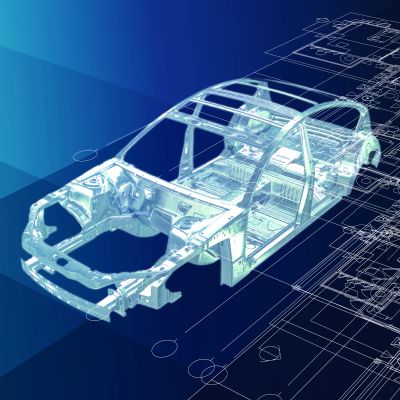 Stuart Keeler
Stuart KeelerQuestions Answered Regarding Advanced High-Strength Steels
February 1, 2016Comments
Fifty years ago, high-strength low-alloy (HSLA) steels became available. And with yield strengths ranging from 30 to 80 ksi, they still find plenty of use today. Meanwhile, metallurgists and mechanical engineers around the world have remained hard at work creating another class of steels known as advanced high-strength steels (AHSS). These alloys are more complex than HSLA steels in composition, processing and application.
Here, I’m pleased to answer some of the questions being asked about AHSS grades by designers, buyers, press and repair shops, and others affected by these new steels.
• What factors drive AHSS research around the world?
The main driver is the North American automotive industry, working to increase fuel efficiency as required by new legislation. The primary technique is lightweighting, which seeks to reduce the thickness of stamped parts. Consequently, the strength of the steel must be increased to balance the thickness reduction. Unfortunately, reduced thickness and increased steel strength cause a reduction in stretchability.
• Are the AHSS grades simply an extension of HSLA steels?
No. HSLA and AHSS exhibit major differences in their microstructures and different microstructures create different properties. HSLA steels start with a specific ladle of molten metal that solidifies into a microstructure called ferrite phase. Meanwhile, AHSS grades comprise a mixed microstructure that includes one or more phases other than ferrite.
As steel solidifies, and depending on a number of variables, the grain size within the microstructure can become large or small. A relatively small grain size makes for stronger steel, because smaller grains have a larger ratio of strong grain boundaries to weaker inner grain volumes. To increase the strength of HSLA steels, manufacturers change the atomic cell structure by replacing iron atoms with atoms of other elements such as potassium, titanium and silicon.
The simplest AHSS grade, dual-phase (DP) steel, exhibits a microstructure of approximately 10 percent high-strength martensite, present as islands as the second phase within the ferrite microstructure. The martensitic phase helps to increase the general strength of the steel. Also, during deformation of DP steel, the boundaries between ferrite and martensite phases undergo a mixing that creates an increase in workhardening and instantaneous n-values.







